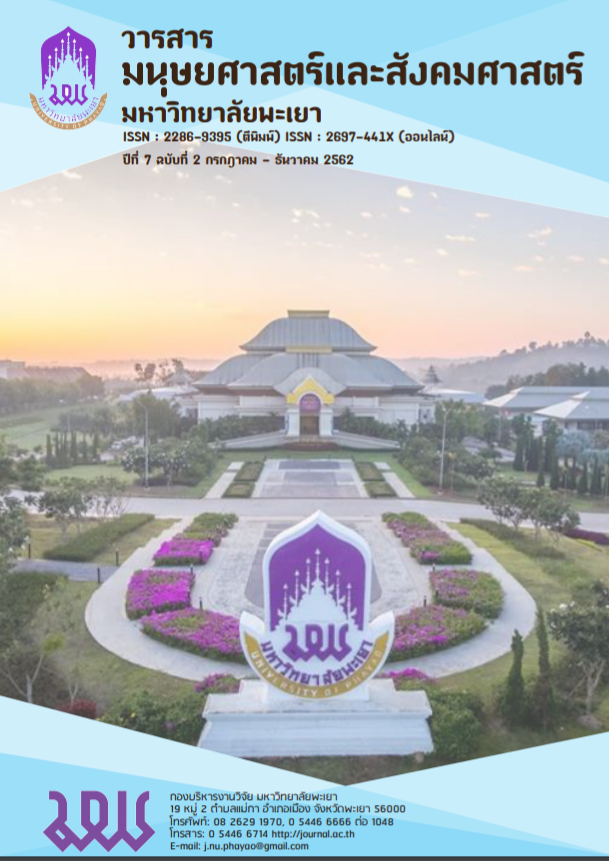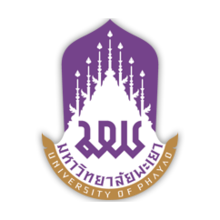A Longitudinal Study of the Acquisition of Chinese Multi-Meaning Adverb “Jiu” by Thai University Students in the Native Language Environment
Keywords:
Thai University Students, Adverb “jiu”, Usage Analysis, Acquisition Orders, Teaching ClassificationAbstract
Based on the compositions corpus of the different grades of 100 Thai Chinese Students majoring in TCL who enrolled in 2014 at Mae Fah Luang University. This paper explore and analyzes in detail the distribution of correct and erroneous use of adverb “jiu” by Thai university students, the types of errors, the development process and trends, Acquisition order and other issues in the native language environment by the method of corpus linguistics and case tracking. The results show that: (1) As a whole, the acquisition of adverb “jiu” is more ideal by Thai university students, and the overall error rate tends to decrease with the improvement of grade level. The frequency of using Chinese adverbs “jiu” is consistent with that of native speakers of Chinese and other foreign Chinese learners. (2) In terms of correct use, the small sense of the major Chinese adverbs “jiu” by Thai university students and the corresponding forms of their use are relatively concentrated. (3) When Thai university students acquire Chinese adverb “jiu”, the error rate of is substitution obviously the highest on the whole as well as on the grade of each class. In terms of semantics, the error rate of “jiu” in the meaning of time-sense is relatively highest, and the error of “jiu” in the meaning of a conjunctive is second. (4) The acquisition sequence of adverbs "jiu" by Thai university students is as follows: “jiu3” and “Jiu7” are first acquired, then is “jiu1” and “Jiu2”,and “jiu4, jiu5, jiu6” are finally acquired. According to the above research results, we put forward corresponding teaching classification.
References
冯丽萍、孙红娟.(2010).第二语言习得顺序研究方法述评.语言教学与研究,1,9-16.
傅满义.(2005).副词“就”和“才”的习得及相关问题.淮北煤炭师范学院学报哲学社会科学版,2,123-125.
高霞.(2004).英语国家学生副词“就”的偏误分析.楚雄师范学院学报,19(2),103-107.
高顺全.(2007).“就”的语法化及相关语言点的习得顺序.汉语教学学刊,3,1-14.
黄伯荣、廖序东.(2007).现代汉语(增订四版).北京:高等教育出版社.
黄露阳.(2009).外国留学生多义副词“就”的习得考察.语言教学与研究,2,54-60.
黄露阳.(2008).多义副词“就”的二语习得研究.中山大学博士论文.
金立鑫、杜家俊.(2014).“就”与“才”主观量对比研究.语言科学,13(2),140-152.
赖先刚.(1992).副词“就”的语义.乐山师专学报(社科版),2,70-76.
李大忠.(1996).外国人学汉语语法偏误分析.北京:北京语言大学出版社.
李金莲.(2007).对外汉语教学中副词“就”的研究.北京语言大学硕士论文.
李俊、陈晨.(2009).西班牙语母语者汉语副词“就”的习得研究.海外华文教育,10,1345-1358.
李娜.(2012).泰国大学生习得副词“就”的偏误分析.吉林大学硕士论文.
刘莹莹.(2014).留学生多义副词“就”的习得顺序及教学研究.西南大学硕士论文.
刘月华.(2001).实用现代汉语语法增订本.北京:北京商务印书馆.
陆丙甫.(1984).副词“就”的义项分合问题.汉语学习,1,31-34.
陆俭明、马真.(1985).现代汉语虚词散论.北京:北京大学出版社.
鲁健骥.(1994).外国人学汉语的语法偏误分析.语言教学与研究,1,49-64.
吕叔湘.(1980).现代汉语八百词(增订本).北京:商务印书馆.
马新华、常敬宇.(1980). 谈“就”.语言教学与研究,2,55-62.
秦燕慧.(2013).中高级泰国学生副词“就”偏误分析.青春岁月,4,114-115.
沈家煊.(1998).实词虚化的机制──《演化而来的语法》评介.当代语言学,3,41-46.
施家炜.(1998).外国留学生22类现代汉语句式的习得顺序研究.世界汉语教学,4,77-98.
宋增国.(2011).高级汉语水平韩国留学生副词“就”偏误分析.语言教学研究,7,127-130.
田原.(2006).评定副词“就”的歧义现象.北京:北京大学出版社.
王还.(1992).漫谈汉语一些副词.语言教学与研究,1,28-31.
王青云.(2012).论副词“就”“才”和语气助词“了”的共现.安徽职业技术学院学报,11(3),28-31.
卫斓、朱俐.(2000).试谈“才、就、V到”的语用条件.首都师范大学学报,增刊,61-65.
肖奚强等.(2009).外国学生汉语句式学习难度及分级排序研究.北京: 高等教育出版社.
邢福义.(1984).要不是P就q句式及其修辞作用.语言教学与研究,1,4-12.
邢志群.(2005).从“就”的语法化看汉语语义演化中的“主观化”,见沈家煊、吴福祥、马贝加语法化与语法研究二.北京:商务印书馆.
许娟.(2003).副词“就”的语法化历程及其语义研究.上海师范大学硕士论文.
杨德峰.(2005).也说“A就A”格式.语言文字应用,3,69-75.
杨芳.(2016).初中级泰国留学生习得副词“就”偏误分析.文教资料,14,27-28+143.
杨寄洲.(2015).汉语教程(修订本).北京:北京语言大学出版社.
郁梅.(2009).对外汉语教学中虚词“就”、“也”、“都”的研究.苏州大学硕士论文.
周莹.(2005).浅析语境因素对语法化的影响——试从《古本水浒传》看“就”的语法化历程.宜宾学院学报,8,79-82.
张东华.(2004).“就”和“才”的认知比较研究.上海师范大学硕士论文.
张燕吟.(2003).准确率标准与出现率标准略谈.世界汉语教学,3,52-61.
张颖.(2015).印度留学生习得汉语“就”的偏误分析.高等教育,2,119.
Chuanpit Sriwichai. (2014). Self-directed Learning Behaviors in English Language Learning of Undergraduate Students of University of Phayao. Journal of Humanities and Social Sciences University of Phayao,2(1),32-42.
Brown, R. (1973). A First Language: The Early Stages .Cambridge, Mass.: Harvard University Press.
Pienemann, M. (1998). Language Processing and Second Language Development: Process ability Theory. Amsterdam: Benjamins.
Pitchaya Nusen. (2018). An Error Analysis on English Reflective Writing Made by First Year Students of the University of Phayao on the Academic Year 2014. Journal of Humanities and Social Sciences University of Phayao,6(1),109-123.
Robert, Lado. (1957). Linguistics across Cultures: Applied Linguistics for Language Teachers. University of Michigan Press, Ann Arbor, MI, US.
Downloads
Published
How to Cite
Issue
Section
License
ผู้นิพนธ์ต้องรับผิดชอบข้อความในบทนิพนธ์ของตน มหาวิทยาลัยพะเยาไม่จำเป็นต้องเห็นด้วยกับบทความที่ตีพิมพ์เสมอไป ผู้สนใจสามารถคัดลอก และนำไปใช้ได้ แต่จะต้องขออนุมัติเจ้าของ และได้รับการอนุมัติเป็นลายลักษณ์อักษรก่อน พร้อมกับมีการอ้างอิงและกล่าวคำขอบคุณให้ถูกต้องด้วย
The authors are themselves responsible for their contents. Signed articles may not always reflect the opinion of University of Phayao. The articles can be reproduced and reprinted, provided that permission is given by the authors and acknowledgement must be given.








